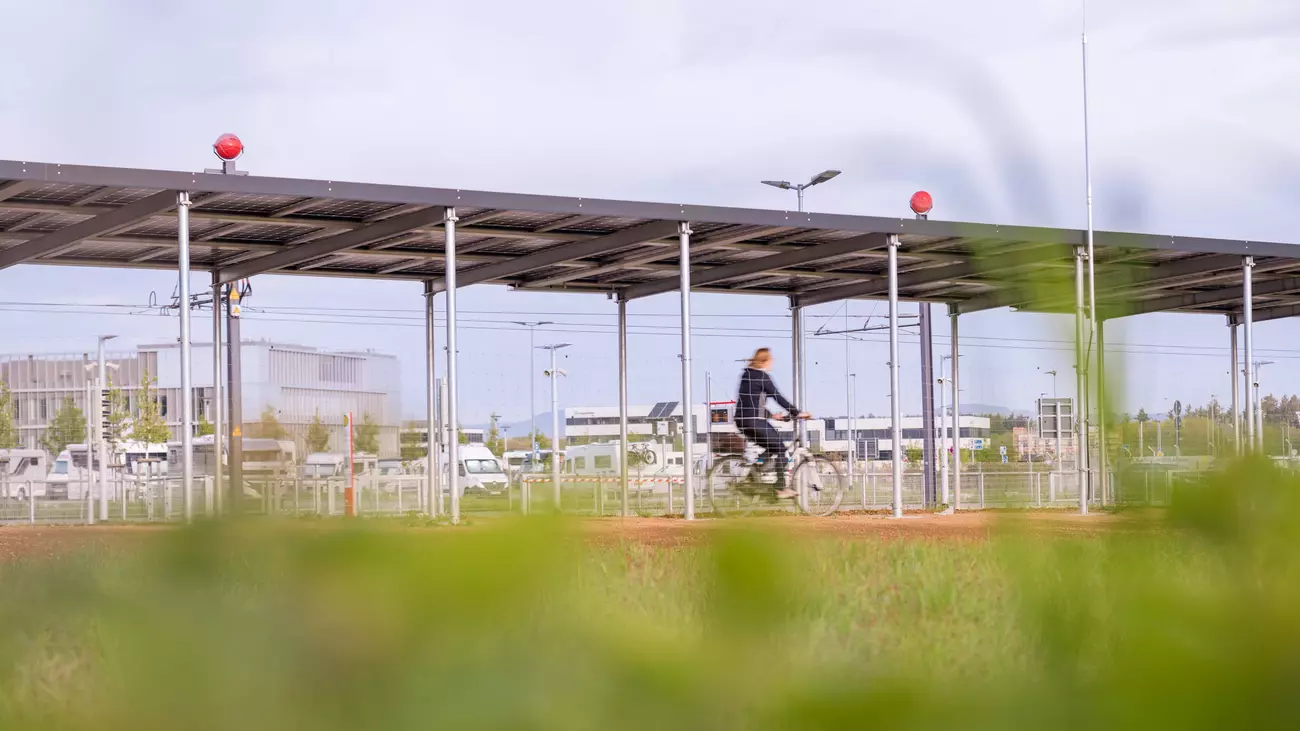Europe’s first solar panel roof-covered bike lane unveiled in Germany

Story by
Linnea Ahlgren
At the beginning of the year, news readers were treated to images of German police forcefully removing climate activists from the village of Lützerath to make way for an open-air coal mine. Indeed, Germany may have averted a looming energy crisis this past winter by upping its coal consumption.
While prioritising energy independence may have caused a detour from the transition to renewables, the country’s goal is to reach climate neutrality by 2045: five years ahead of the EU target. A small step on the way but a step nonetheless is Europe’s first solar panel roof-covered cycling path which opened this week in the city of Freiburg, about a two-hour drive south of Stuttgart.
The photovoltaic (PV) pilot project consists of a 300-metre-long installation featuring over 900 translucent glass solar panels, and will generate around 280 MWh of solar power per year. Solarwatt, the producer of the panels covering the path, says they are particularly durable as the solar cells are enclosed on the front and back by robust glass panes.
Existing infrastructure has increasing role to play
The cleantech company now has three decades of experience creating solar panels and currently employs over 800 people across Europe. In 2022, it acquired Utrecht-based battery-storage specialist REConvert for an undisclosed amount, establishing a Dutch subsidiary.
Solarwatt’s CEO Detlef Neuhaus believes rethinking photovoltaics will be essential for Germany’s transition to clean energy, and sees an untapped potential in already existing infrastructure.
“Already sealed areas such as parking lots, paths and roads are playing an increasingly important role,” Neuhaus said. “We are proud that we could contribute our part to the success of this innovative pilot project.”

The modules used in the bike lane project have general technical approval from the German Institute for Building Technology (DIBt). This means that they can be used without any restriction for both private and public projects, without the need for case-by-case testing.
Solar-powered neighbour stadium
Meanwhile, the pilot bicycle lane is situated close to the SC Freiburg football stadium. The arena is already equipped with a 2.4MW solar panel roof, courtesy of around 6,000 heterojunction solar modules from Swiss manufacturer Meyer Burger.
This makes it the third-largest solar panel installation on any stadium in the world. (The largest belongs to Turkish Süper Lig football club Galatasaray’s home arena Nef Stadium, which comprises more than 10,000 panels.)
The potential for much longer PV-roofed paths
This may be Europe’s first solar panel roof-covered bicycle path (excluding several projects where the path itself has been covered with PV panels). However, since 2014, South Korea boasts a 9 kmbicycle lane covered by a roof made of solar panels.
This 4-metre wide lane runs in the middle of an eight-lane highway, and connects the cities of Daejeon and Sejong. Its 7,502 solar panels are capable of producing 2,200MWh per year – the equivalent of powering around 600 households, according to the country’s Ministry of Land, Infrastructure and Transport. Several other Korean cities have implemented the technology, but this remains the longest and most power-generating project to date.
Get the TNW newsletter
Get the most important tech news in your inbox each week.
Also tagged with
Europe’s first solar panel roof-covered bike lane unveiled in Germany Read More »






